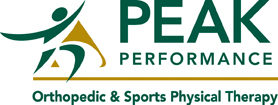 Why does my wrist hurt?
Why does my wrist hurt?
Why does my hand and fingers go numb?
Why does my hands go numb at night?
Carpal Tunnel Syndrome is a common disorder that involves compression of the median nerve. The median nerve and the tendons that bend your fingers pass through a structure called the carpal tunnel in the wrist. The carpal tunnel is made up of bones on 3 sides and a ligament. The median nerve can be compressed in this tunnel due to many reasons: an inflammation of the tendon sheaths, shortening of the ligament that covers the median nerve, prolonged positioning of the wrist in a bent or extended position, repetitive hand movements, repetitive shaking of the hands or wrist, fracture or sprain of the wrist, rheumatoid arthritis, gout, diabetes, lupus, hypothyroidism, pregnancy, Raynaud’s disease, and obesity.
Common symptoms of carpal tunnel syndrome include loss of grip strength, frequent dropping of objects, inability to make a fist, sharp pains that shoot from the wrist to the elbow, as well as tingling, numbness, or burning pain in the thumb, index finger, middle finger, and half of the ring finger. Often times it is described as feeling like your hand went to sleep, and patients “shake” their hand to try to relieve the symptoms. Symptoms are typically felt in the hand and forearm, but can spread up to the shoulder.
Carpal tunnel can typically be treated with conservative treatment. Initial treatment consists of activity modification, as well as limiting the performance of the suspected aggravating activity. When performing activities involving your wrist, it is important to pay attention to your mechanics and keep your wrist in a neutral or slightly extended position. Application of a wrist splint at night to keep your wrist in a slightly extended position is often times beneficial. To reduce inflammation, ice can be applied for 10-15 minutes 2-3 times a day, as well as taking an NSAID such as ibuprofen. If these suggestions do not improve your symptoms, physical therapy may be indicated.
Physical therapy treatment for carpal tunnel commonly involves soft tissue mobilization, such as the ASTYM technique. This is a noninvasive treatment that helps to break down soft tissue adhesions (scar tissue) and promote your body’s normal healing process. Treatment also involves a stretching and strengthening program to help restore normal range of motion and strength to get you back to your normal activities without pain.
